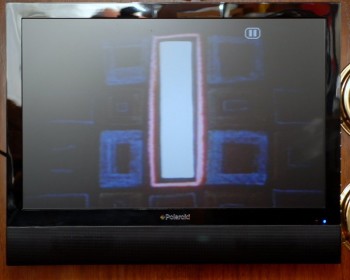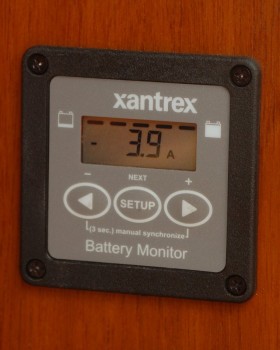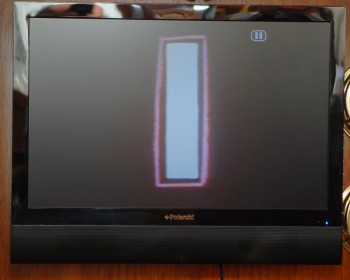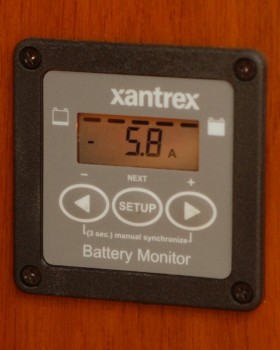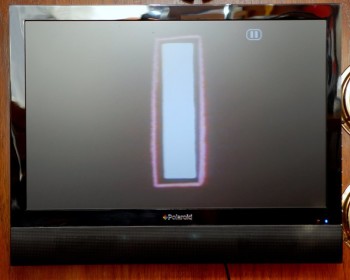AC vs. DC Tested on a 12 Volt / 120 Volt TV
For this brief article I wanted to test the total system inefficiency of using inverters when powering an LCD TV. It is stated by many companies that inverters are about 10% inefficient when converting from 12 volts DC to 120 volts AC but there is more to the story.
Inverter Efficiency:
While this 10% can be true, it is often rated when running them at max output and with inductive loads. The overall efficiency rating often fails to remain accurate when powering or charging items such as computers, tablets, phones & LCD TV’s where we run a DC>AC>DC path.
In February 2010 Practical Sailor tested eight inverters and found the actual tested efficiencies were widely varying. The eight tested inverters ranged from a low of 73% efficient to a high of 93% efficient and, as a group, had an average efficiency of about 86%. How do you know how efficient your inverter is? You’d really need to test it with the loads you are using it with.
These total DC>AC>DC efficiency losses are not all from the inverter, but stem from operating devices that run from 120 volts AC and then convert it to DC voltage inside the unit, or in the AC power cord with an in-line converter often referred to as a “wall-wort“. If your device already runs internally on DC, then running via an inverter you’re actually converting from DC to AC then back to DC again. Ouch! By going DC>AC>DC you are only adding to whatever inefficiencies your inverter already has by stacking the AC to DC wall-wart onto the equation..
Stand-By Loads:
An inverters quiescent or stand-by loads matter too and are very often completely ignored. In the Practical Sailor testing they found the lowest standby draw to be 0.6A. This stand-by draw would results in a -14.4Ah consumption each 24 hour period.
On the high side they found an inverter that sucked current like a thirsty Vampire with a 2.24A stand-by draw. A quiescent draw of 2.24A is competing with some DC refrigeration systems and a 2.24A stand-by load translates into -53.8Ah each 24 hour period where the inverter is just sitting there, in stand-by, waiting for an AC load. The average stand-by load of the eight inverters tested comes out to about .96A. Again how do you know your inverters quiescent draw? You measure it. When choosing an inverter, especially an inverter than “auto-transfers” the specs really need to be scrutinized.
Choose the Correct Inverter:
Please always choose & use UL rated marine inverter. This point is critically important.
ABYC-A31
“31.5.3.2 All marine power inverters shall meet the applicable requirements of UL 458, Power Converters/Inverters and Power Converter/Inverter Systems for Land Vehicles and Marine Crafts, and Supplement SA, Marine Power Converters/Inverters and Power Converter/Inverter Systems.
31.5.3.3 The frequency and voltage regulation shall comply with section 27 of UL 1248, Engine-Generator Assembly for Use in Recreational Vehicles.”
Simply meeting UL458 is not sufficient for a “marine inverter”. If you don’t understand inverters, inverter wiring and the reasons for using a marine inverter please find a tech who does.
Manufacturers such as Magnum, Victron & Mastervolt all make excellent marine rated inverters. When in doubt call the manufacturer and ask if the inverter meets UL458 as well as the marine supplemental portions of UL458.
The Testing:
To perform this test I used a 19″ Polaroid TV that was designed to run on either 12 volts or 120 volts. What I really wanted was less lab or theoretical numbers and more real world numbers derived on a boat with a device that can operate on both DC and AC, and one that would give a steady output from which to measure.This TV and vessel fit the bill.
Please be aware that not all devices, that internally run on 12V, can run on a variable 12V supply. What does that mean? It means they may do okay on 12.00V but may toast themselves when fed 14.6V. Please be sure your 12V input device can be run on a wide voltage range of at least 10.5V to 15.5V before using it on a boats DC system fed directly off the 12V system. Not all companies spend the extra pennies on the DC input to make it capable of tolerating a variable DC input.
To be sure this TV was consuming a fixed amperage I loaded a DVD into it and then paused it at exactly the same spot in the “Elmo” disc of my daughters. For the record, I freakin detest Elmo.. (wink)
Running off 12V DC:
The on-screen shot seen here is showing the TV paused, and in this case it is running off of 12 volts DC.
Many items you would choose to use on a boat, such as an LCD TV, a tablet or a laptop computer, already run on DC internally. By using an inverter plus the “wall-wort” or AC/DC converter box, you know the little black box device that usually resides in the middle of the power cord, you are getting horrible inefficiencies because you are converting from DC to AC then back to DC again.
Many 120V devices can run on DC without using an inverter and the AC/DC wall-wort. You can simply read the output specs of the wall-wort or the input specs of the device, to determine if it is capable of being run of DC.
Current Consumption Running Direct DC
Here the TV is on pause while plugged into the boats 12 volts system.
When running the DVD, paused, on 12 volts, consumes 3.9 amps.
NOTE: I left the TV paused for over 5 minutes and the voltage & current never fluctuated. I made sure to hold ship voltage steady in all tests so as to get as accurate a data shot as I could. As voltage varies, so does current, so I used a power supply to hold battery voltage steady for all tests.
Running From a 2000 Watt Inverter – DC>AC>DC
This photo shows the DVD paused in almost the exact same spot though this time it’s running on 120 volts AC through a 2000 watt Freedom inverter.
Take a look at the next photo to see how inefficient it is compared to direct DC.
TV Running On A 2000 Watt Inverter
There is no trickery here and the Xantrex battery monitor is not lying.
Running this TV on 120 volts AC through a 2000 watt Freedom marine inverter uses 5.8 amps.
When compared to running this TV on direct DC the inverter + wall-wort combo is 32.8% less efficient. This is a long way from what many would assume should be a 10% inverter inefficiency.
The efficiency loss here is not just inverter. It comes from the conversions from DC to AC in the inverter, and then converting AC back to DC through the TV’s wall-wart.
This particular inverter also has a rather high quiescent draw when just sitting there doing absolutely nothing waiting for an AC load. The quiescent draw of an inverter is often left out of conversion efficiency claims yet it also serves to impact the total daily efficiency if left in search-mode waiting for an AC load…
TV Running On A 400 Watt Inverter
For the next test I used a smaller 400 watt inverter. My reason for doing this test is to show that an inverter sized closer to the load can often be slightly more efficient. Of course brand and build quality have a role here too.
TV Running on a 400 Watt Inverter
Perhaps it’s not that much more efficient but 6 tenths of an amp is nothing to snub your nose at, especially if this were a device like a laptop computer that could be left running all day long.
The 400 watt inverter ran the TV using only 5.2 amps. Compared to direct DC it was a mere 25% less efficient. Again, this is a long way from the 10% stated by many inverter manufacturers, and often incorrectly believed by boat owners.
This certainly was not a critical pinpoint accuracy scientific experiment but rather a real world look designed to show what one item, a TV, designed to run on both 120 volts AC and 12 volts DC, will consume when run both ways.
If you have the option to buy a device that will run ondirect DC, vs. 120 volts AC, you should buy it.
Inverting power from 12V DC to 120 volts AC, then back to DC again is a terribly inefficient way to power devices off your boats house bank of batteries.
When ever you can stay with direct DC and this includes cell phones, laptop computers, TV’s tablets, camera chargers & more.
Good luck & happy boating!

